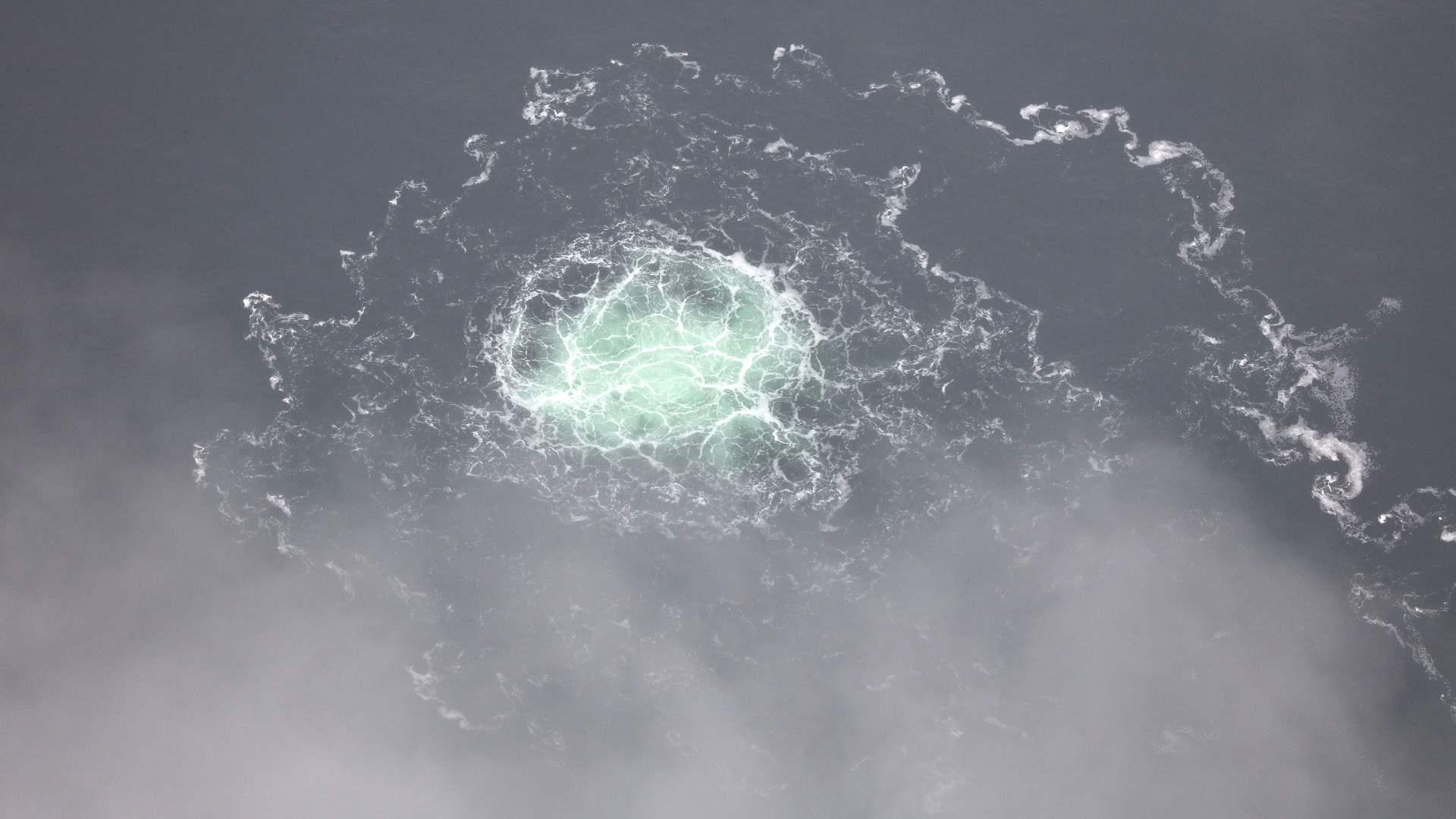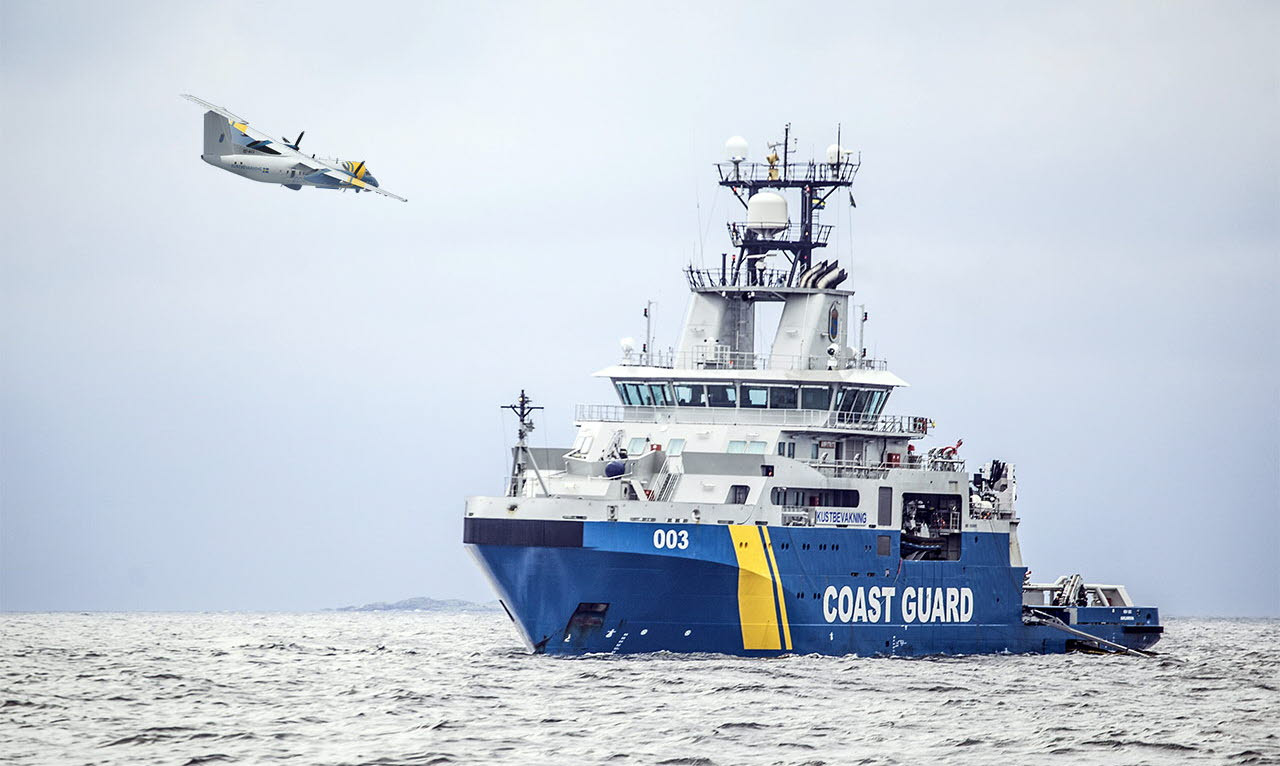Swedish authorities say they have identified a fourth breach along sections of the Nord Stream 1 and 2 pipelines that run under the Baltic Sea between Russia and Germany. The exact circumstances behind the ruptures remain unknown, but NATO has now joined the European Union (EU) in concluding that they were most likely the result of some kind of deliberate attack. Readers can find out more about the details that had already emerged in our preceding coverage of the incidents.
The newly announced rupture is the second to be detected along the Nord Stream 2 pipeline. There are two other known ruptures in the Nord Stream 1 pipeline. The first breaches were detected on Monday following a series of large underwater explosions. At the time of writing, neither the EU nor NATO, or any of their member states independently, appear to have formally accused any actor of culpability, though fingers have increasingly been pointing at Russia.

The Swedish Coast Guard revealed the second Nord Stream 2 rupture earlier today, saying it was close to the first one (a distance of approximately 1 mile). It also released pictures and video footage, seen above and below, portions of which appear to have been taken from one of the service’s Dash 8-Q300 maritime patrol aircraft and the search and rescue vessel Amfitrite, of gas bubbling up on the surface. Amfitrite is also equipped with a remotely operated underwater vehicle, but it is unclear if the ship has conducted any direct inspections of the breaches using this system.



The locations of the now broken portions Nord Stream 2 pipeline are both in international waters, but are within an area where Sweden has declared an Exclusive Economic Zone (EEZ). The two ruptured sections of the Nord Stream 1 pipeline are also in international waters, but are situated in an area that is covered by Denmark’s EEZ in the Baltic Sea. The two pipelines are both partially owned by Russian state gas company Gazprom and European energy companies.
Swedish and Danish authorities are among those investigating the incidents, with other countries in Europe and beyond, such as the United States, assisting. Sweden and Denmark are both EU members. Demark is also a NATO member, while Sweden is currently in the process of joining the alliance.
“The damage to the Nordstream 1 and Nordstream 2 pipelines in international waters in the Baltic Sea is of deep concern,” a statement from NATO today read. “All currently available information indicates that this is the result of deliberate, reckless, and irresponsible acts of sabotage. These leaks are causing risks to shipping and substantial environmental damage. We support the investigations underway to determine the origin of the damage.”
“We, as Allies, have committed to prepare for, deter and defend against the coercive use of energy and other hybrid tactics by state and non-state actors,” that statement added, but did not name any specific party as being responsible for the pipeline incidents. “Any deliberate attack against Allies’ critical infrastructure would be met with a united and determined response.”
This is in line with a separate statement from the EU yesterday, which said “all available information indicates those leaks are the result of a deliberate act” and promised “a robust and united response.” Those sentiments were echoed separately by the prime ministers of Sweden and Denmark, with Swedish Prime Minister Magdalena Andersson saying today that a large explosive device would have been necessary to cause the damage. The Swedish Security Service, a national-level law enforcement entity in that country that also has counter-espionage and counter-terrorism responsibilities, and is roughly analogous to the U.S. Federal Bureau of Investigation (FBI), has said that it cannot yet rule out “that a foreign power is behind it.”
Despite a lack of official allegations, Western officials do increasingly appear to be looking at the Russian government as a possible culprit. “It’s hard to imagine any other actor in the region with the capabilities and interest to carry out such an operation,” an anonymous Danish military official told CNN, according to a story published today. Russia is currently subject to particularly crippling Western sanctions over its invasion of Ukraine in February and has a clear interest in fueling an already serious energy crisis impacting various countries in Europe as winter approaches in retaliation. Gazprom had already stopped the flow of gas through Nord Stream 1 at the end of August, ostensibly for maintenance. Nord Stream 2 was completed last year, but has yet to be used operationally after German authorities froze the project under pressure from the U.S. government before Russia’s all-out invasion of Ukraine.
In addition, CNN’s story follows a report in The Times newspaper in the United Kingdom yesterday indicating that British officials viewed a Russian attack involving uncrewed underwater vehicles planting explosive charges as a particularly “likely scenario.” The potential for combat divers to have planted explosives has also been raised given the relatively shallow depths where the damaged sections of the Nord Stream pipelines lie. That had all, in turn, followed a report from German magazine Der Spiegel that said the U.S. Central Intelligence Agency (CIA) had warned authorities in Berlin about the potential for attacks on the Nord Stream pipelines over the summer.

CNN also reported today that unspecified Russian Navy support ships were observed earlier this week in the Baltic Sea in the vicinity of the pipeline breaches. At the same time, there are no clear indications one way or another that this, as other recent Russian naval activity is directly linked to these incidents. Russia has a significant naval presence along the Baltic Sea and regularly moves warships, submarines, and other vessels in and out of the region.
Russian authorities, for their part, have denied any involvement and promised their own probe into the pipeline incidents. They have also cast aspersions and amplified theories suggesting that the United States or other NATO members might be responsible in some way, but have provided no evidence to support any of these claims.
Routine U.S. Navy and other NATO naval activity in the region has prompted particular speculation about potential western involvement in these incidents. A 2015 incident in which Swedish security forces recovered an underwater mine-hunting drone with a live explosive charge inside it near the Nord Stream 1 pipeline has reemerged as part of these discussions. The owner of that uncrewed underwater vehicle was never disclosed and Swedish officials at the time said it did not pose a threat to the pipeline or ships operating in the area.
The War Zone has reached out to the U.S. Navy’s top command in Europe, Naval Forces Europe-Africa/U.S. Sixth Fleet (NAVFOREUR-AF/Sixth Fleet), as well as NATO, for comment. In response, NAVFOREUR-AF/Sixth Fleet spokesperson Capt. Tamara Lawrence referred us to statements made by a senior U.S. defense official and the State Department’s top spokesperson, Ned Price, yesterday.
Yesterday, a senior U.S. defense official, in the course of a routine press briefing regarding the situation in Ukraine, said the United States was “absolutely not involved” in the pipeline incidents.
“The idea that the United States was in any way involved in the apparent sabotage of these pipelines is preposterous,” State Department spokesperson Price said during a separate press briefing yesterday. “It is nothing more than a function of Russian disinformation and should be treated as such.”
“We are aware of reports concerning leaks to the Nord Stream pipelines,” Capt. Lawrence had also said in a statement issued yesterday. “We stand ready to provide support and assistance in close coordination with our allies and partners, if needed.”
It could be some time before the various ongoing investigations ultimately produce any harder conclusions about the nature of these incidents and who might be responsible. What EU, NATO, and others may be willing and able to do, especially if it is determined that Russia is culpable, remains to be seen. Discussions about the potential challenges in finding proportionate and practical responses to attacks on multi-national underwater infrastructure in international waters have come up before in regard to the potential cutting of undersea communications cables.
Beyond any geopolitical impacts, there are environmental concerns arising from the gas now flowing out from the breaches in the pipelines. Gas is at least expected to stop spewing from the breaches in Nord Stream 1 by Monday.
Furthermore, there are fears that the damage may be severe enough to make it cost-prohibitive to make any repairs, effectively shutting down the pipelines for good, as well. Once the gas stops coming out of the broken lines, saltwater will begin to rush in and begin to cause corrosion. There is an additional risk of ice plugs forming in the lines that would need to be cleared as part of any repair process.
Fears also may be growing about whether the Nord Stream pipeline incidents reflect some kind of broader effort on the part of one or more hostile actors. Danish police confirmed today that they are investigating mysterious drone activity over the Halfdan B offshore oil and gas field in the North Sea, but could provide no additional details. Norweigan authorities issued their own alert about unidentified drone flights around its offshore oil and gas facilities earlier this week and subsequently announced that there would be an increased military presence around that infrastructure.
If nothing else, the pipeline blasts, together with this still-unexplained drone activity, certainly do raise questions about whether Russia’s conflict in Ukraine may be spilling out into other areas of Europe.
Contact the author: joe@thedrive.com
